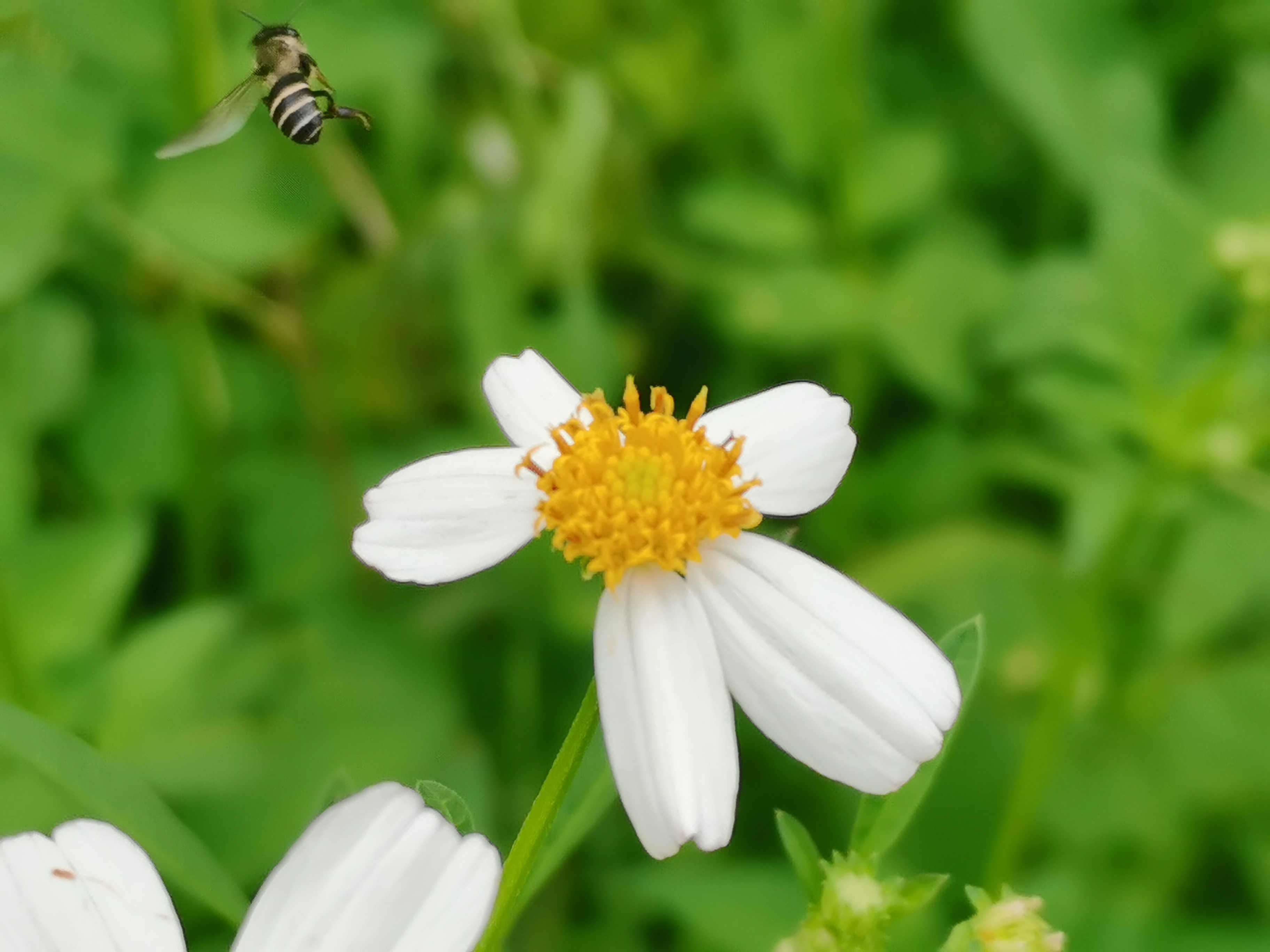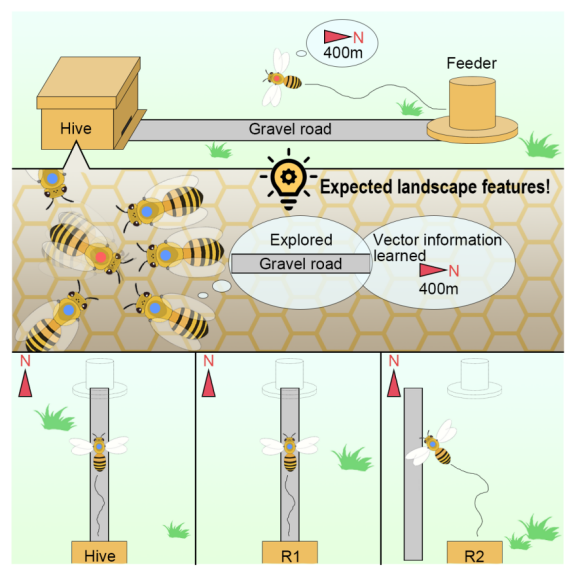The waggle dance, performed by successful forager honeybees (Apis mellifera) inside the hive, is a well-known form of symbolic communication that informs nestmates about the location of resources. It has been traditionally understood that the dance encodes only the distance and direction (the vector) to the target. However, it remains unclear whether follower bees integrate the vector information with their own spatial memories of landmarks to optimize navigation.
In a study published in Current Biology , researchers from Xishuangbanna Tropical Botanical Garden (XTBG)of the Chinese Academy of Sciences and Freie Universität Berlin showed that dance-following bees combine the dance vector with their cognitive memory of landmarks. The follower bees form an expectation of the landscape features after learning the information of waggle dances.
The team trained a small group of "dancer" bees to a feeder (simulating a natural food source) located north of the hive, which required flying along a prominent gravel road. The dance-following bees were then captured and released from three different sites. One release site mimicked the hive environment with a north-south path as a landmark, while another site lacked this distinct path. A control group was released directly from the hive where the path was present.
The results showed that the bees did not simply follow the communicated vector blindly. When the indicated food source was near a known path, they relied on and followed that path. In the absence of an expected landmark, their search behavior became more exploratory.
At the release site with the familiar path landmark, the bees' flight patterns, specifically their flight distance and straightness, were similar to those of bees released from the hive. They flew more directly and searched more efficiently. In contrast, bees released at the site without the clear path landmark flew farther and in less straight paths, resulting in a broader and less precise search.
“Our study reveals a higher level of cognitive complexity in honeybee communication. Waggle dance-following bees do not simply follow a blind vector instruction; they integrate it with a cognitive map of their surroundings built during earlier exploratory flights. This allows them to form expectations and navigate more efficiently,” said WANG Zhengwei of XTBG.

A honey bee performs waggle dance. (Image by WANG Zhengwei)

Successful foragers perform a "waggle dance" inside the hive to communicate the vector (direction and distance) of a valuable food source to their nestmates, the follower bees. (Image by LI Yuanlang)
Available online: 24 September 2025


